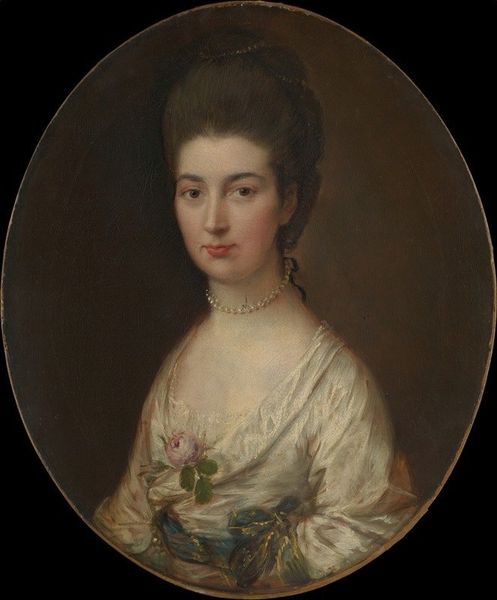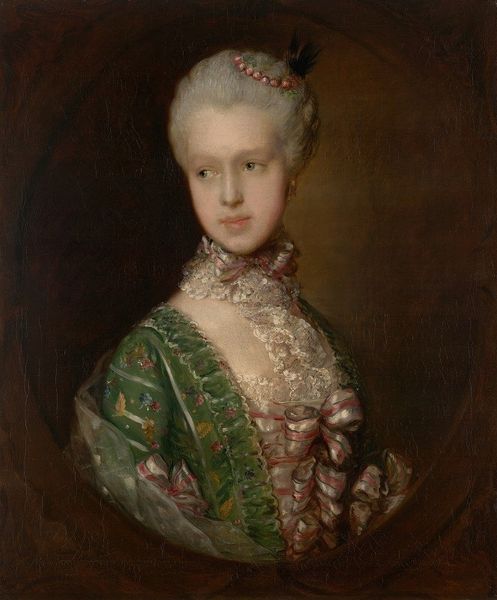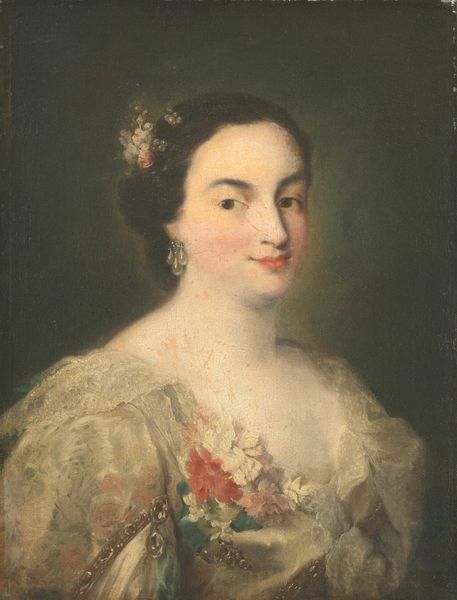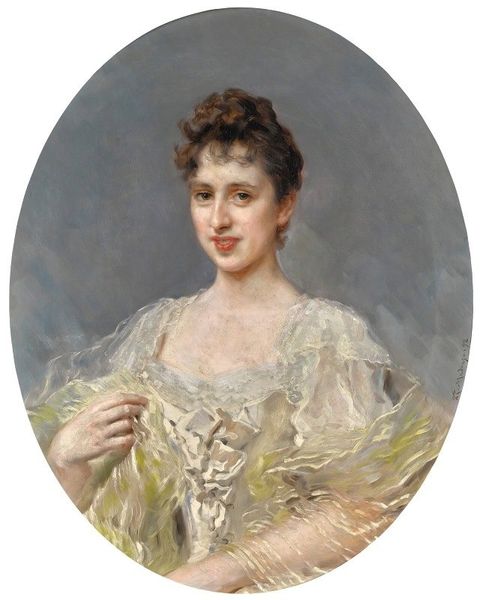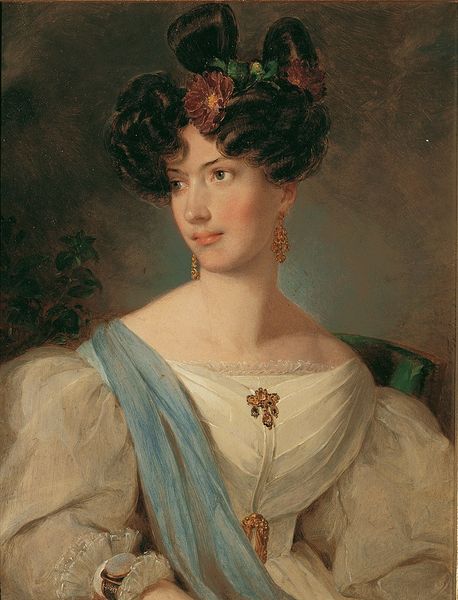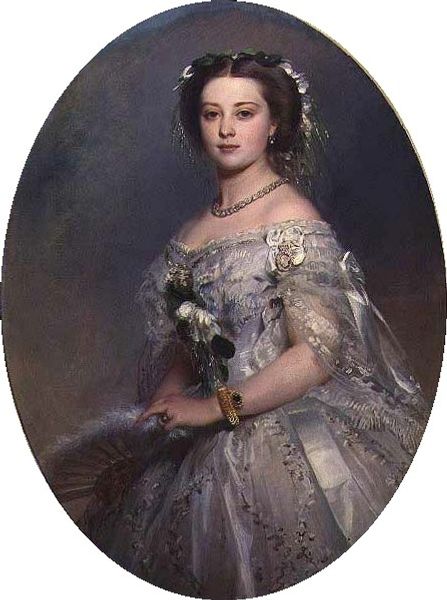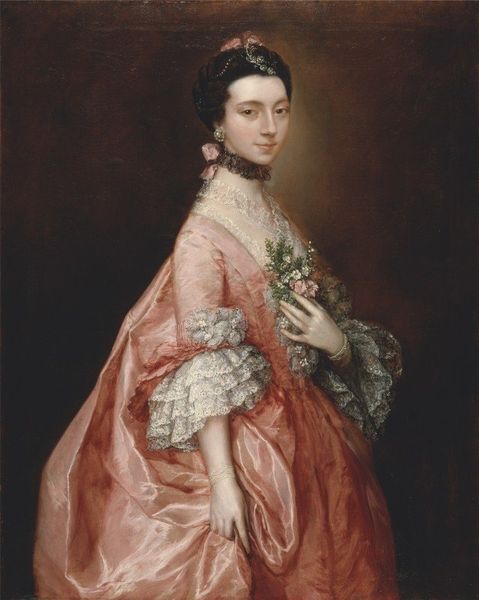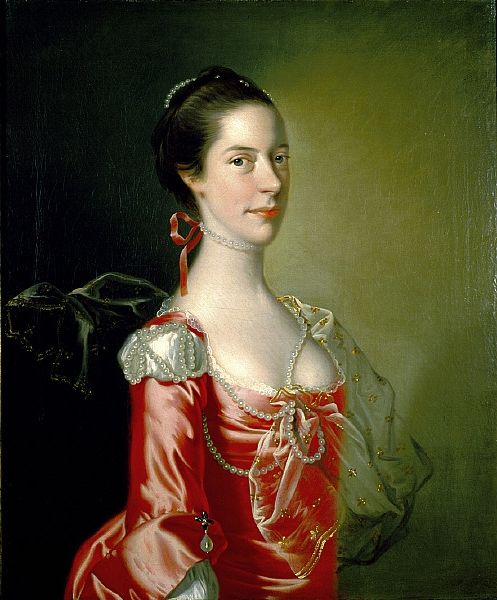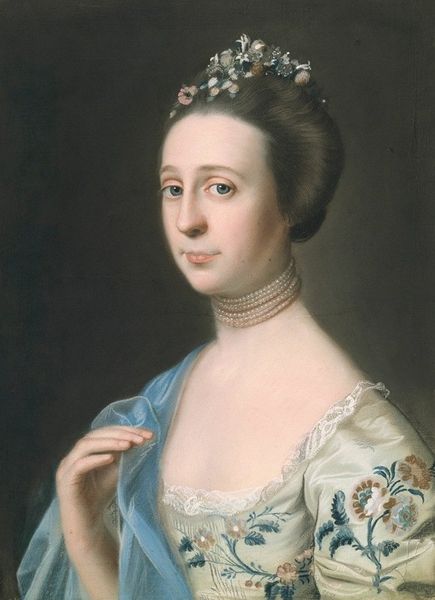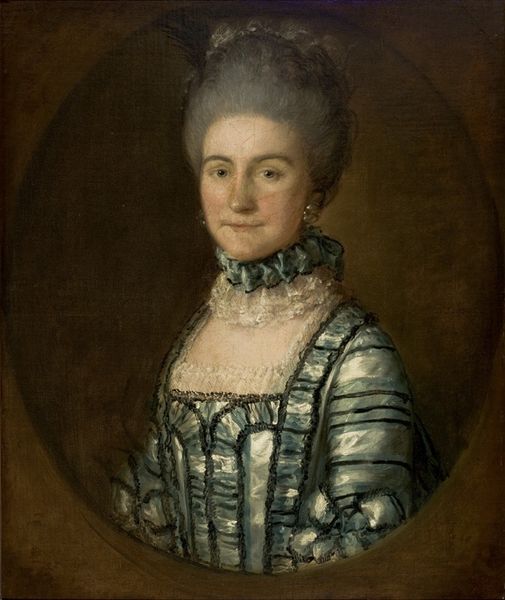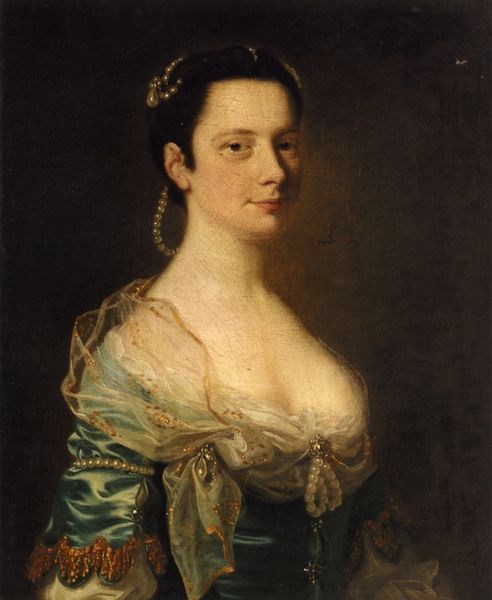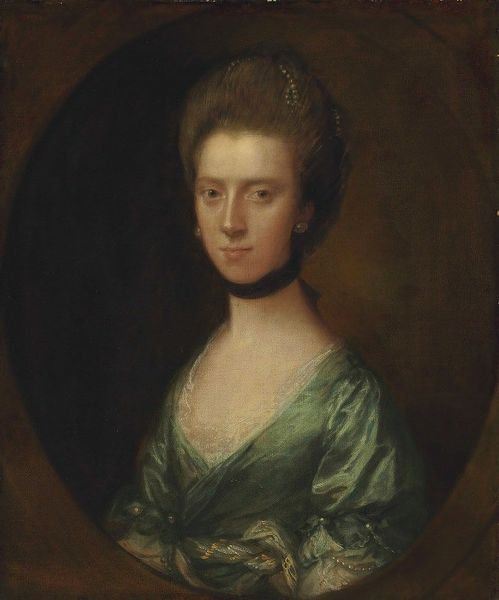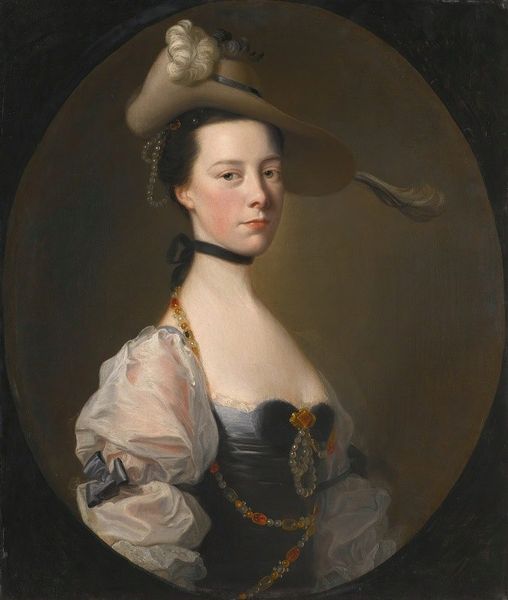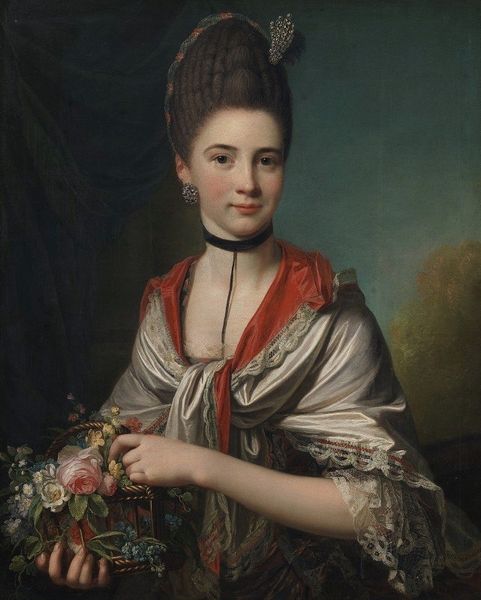
painting, oil-paint
#
portrait
#
figurative
#
painting
#
oil-paint
#
genre-painting
#
academic-art
#
rococo
Copyright: Public Domain: Artvee
Curator: Let’s turn our attention to Thomas Gainsborough's "Mrs. William Monck," an oil on canvas portrait created between 1760 and 1765, a time of great social and artistic change. Editor: First blush? The oval framing gives it a cameo vibe. I love the almost unreal, iridescent quality of her dress. She looks a little melancholic, maybe lost in thought. It's quite dreamy, if you ask me. Curator: Indeed. Gainsborough was deeply embedded in the Rococo and early academic art scenes, reflecting the sensibilities and social values of his patrons, often members of the British aristocracy. Mrs. Monck, elegantly poised, reflects the idealized representation of women during that era. The pearls, the lace, the hint of a rose... These elements underscore the sitter’s wealth and status within a rigid class structure. Editor: Absolutely. And yet, there's a delicate pushback, don't you think? Her gaze is direct but not aggressive. It's like she's acknowledging the performance of her status, even hinting at questioning its confines. Or maybe I just want her to! Plus, the dark, earthy backdrop contrasted with the pastel clothing heightens her presence—almost a rebellion against that darkness. Curator: An intriguing read. The Rococo era embraced ornamentation and elaborate design, a visual language that upheld hierarchical social relations. What does it mean for us today to engage with an artwork such as this? How does a portrait like this perpetuate or, potentially, subvert traditional power dynamics linked to class and gender? Editor: The magic is that it can be both, can't it? On one level, it’s a snapshot of privilege. But I’m also seeing her individuality fighting its way through. The almost imperceptible shake of the shoulders! Curator: This tension between personal expression and societal expectation opens avenues for deeper exploration of 18th-century gender and class politics, inviting us to rethink conventional readings of portraiture. Editor: For me, this is more than just a record of somebody wealthy, it’s more of an echo from her life. All this just makes me ponder her hopes and frustrations as a person trapped inside those rigid expectations.
Comments
No comments
Be the first to comment and join the conversation on the ultimate creative platform.
